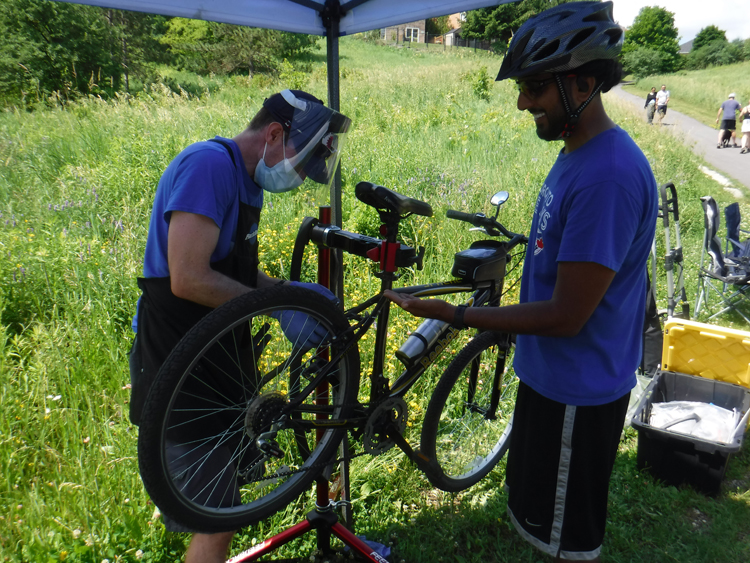Have you had sticker shock when buying a used bike? Bike mechanic Gerald Pyjor offers these tips on getting value for your purchase.
Prices for used bikes have risen dramatically in the past year. High demand is the reason. A quick search of online marketplaces turns up several results of prices that are unrealistic to me. Here are a few tips of what to look at when you are buying a used bike.
You could be buying a bike that has been used just a few times, or something that has been ridden the equivalent of across the country. Since you are spending your hard earned money on a bike, it would be nice to get value, and not be taken advantage of by someone trying to make a quick buck.
Let’s start at the wheels
Look at the hubs in the next two images. They should be clean. Rust-free is a bonus. If you notice dried out, discoloured grease, ie brown stains, that’s a sign that the hub and the grease inside is old. What that means is the hub needs to be overhauled, to allow it to spin freely and not cause any premature wear.


While you are checking out the hubs, pick up the bike and spin the wheels. They should spin freely, with no noticeable binding. The wheel should continue to spin and not stop prematurely. If the wheel is rubbing against the brakes, it will stop, and not spin freely. The wheel should also look straight, while you are spinning it. If it’s wobbling or hopping, your wheels need to be ‘trued’ (straightened). It can also be an indication that the wheel has received a good hit. Check for broken spokes and damage to the rim. Not all wheel truing issues result from an impact. Some are just the sign of poor manufacturing or lazy assembly.
Next, let’s look at the Cables. Are they rusty?
This includes derailleur, or brake cables. They should work smoothly, without binding. Ideally, they should not be frayed. The end on this cable is frayed, but this is cosmetic and shouldn’t affect shifting. But watch out for those pointy wires… ouch!

Cable needs a cable end to prevent a puncture wound.
Bent Chainrings
Spin the crank arms (pedals) and observe the chainrings as they spin. They should spin true. A warp could indicate damage or poor shifting practises.
Look at the condition of the drivetrain, chain, cassette, derailleurs and jockey wheels. Ideally they should be clean, rust free, and free from obvious signs of damage. The cassette should be clean, with no build up of grease or gunk. A sign of how the bike was treated, or how much riding it has had without maintenance will reveal itself with gunk build up.

Chainrings, and a little surface rust on the derailleur.

Excess grease and gunk built up on the back of the derailleur. Should be clean and re-lubed

Nice and clean brake

Signs of old and dried out shifter grease
Dents in the frame or cracked welds
If you see a visible crack in any weld, the frame is toast, turn and walk away. Dents are less catastrophic, unless they are significant.
Tires
Look for worn spots, flat spots, cracks in the sidewalls. This is a sign of old rubber, and eventual failure.
Take the bike for a test ride
Try shifting the gears. The bike should shift smoothly, and sound smooth. The brakes should also work well. The lever shouldn’t touch the handle bar when a brake application is made. The brakes shouldn’t pulsate or rub. While shifting, the gears shouldn’t jump or skip.
Wheel Spokes
Look for rusty spokes and nipples. This shows the age of the bike or where and when it was ridden. Rusty, corroded spokes can make it difficult to true the wheel. Corrosion could be a fatal flaw of the wheel, rendering it not fixable.

These rusty spoke nipples are going it make it almost impossible to true this wheel.

Nice and clean rear cassette and chain
So, what does this all mean?
Basically, these are clues and bargaining chips for your purchase. These clues should give you more knowledge to substantiate the seller’s claims. No guarantee, but these tips should make it easier to spot a decent bike and avoid one that will cost you more.


You must be logged in to post a comment.